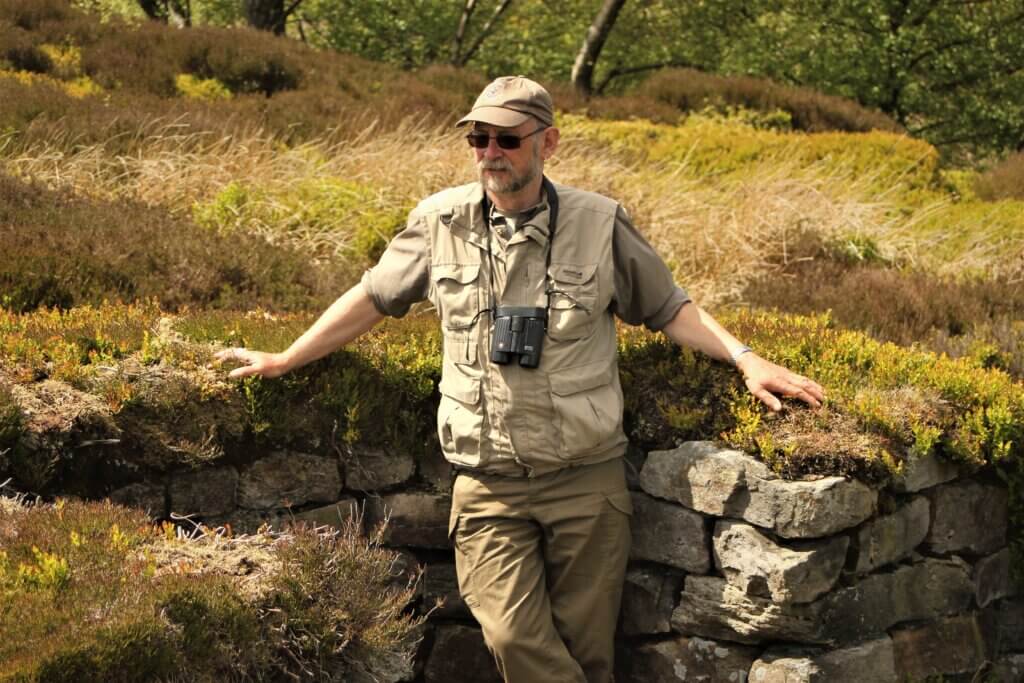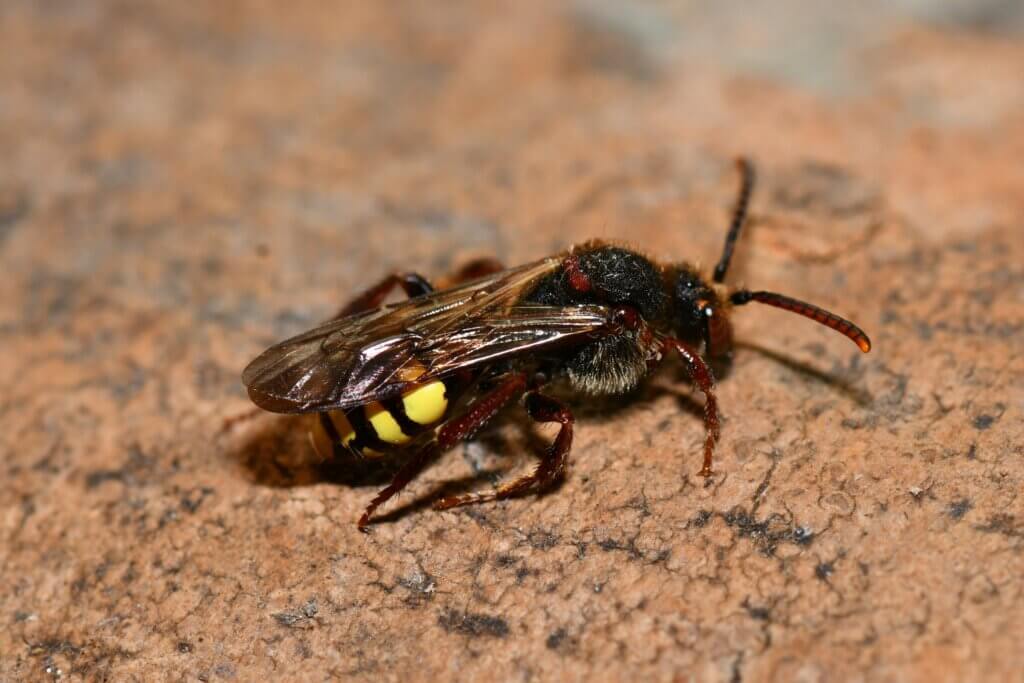
Paul Irving is a retired scientist and ecologist. Involved in raptors and raptor protection in Northern England for over 30 years, especially Hen Harriers and Merlins. A Bird Ringer since the early seventies, other interests include just about anything to do with wildlife, photography (of wildlife), fishing, reading and Native Americans. Worked and lived in North Yorkshire but now living near Llanidloes, Powys, Mid Wales.
In these testing times of Lockdown there are doubtless lots of frustrated naturalists and conservationists out there, obeying the rules but getting at little “Stir crazy” as a result. My year list is almost stalled, I haven’t been able to get near any Hen Harriers or Merlins for months, never mind getting to North Yorkshire nor the grand children in Cardiff. Yet we are incredibly lucky where we live in that a daily dog walk takes me to a great piece of country straight over the stile from our small holding. So I walk along a little bit of the River Severn with binoculars, occasionally camera and always a border collie. It’s almost a month since I went anywhere else.

I’ve taken a keener interest in not just the birds, I have a trail camera out there pointing at an Otter sprainting place, although at last check all that had visited was a Fox. I’m trying to get to grips with some of our local bees, bumbles are just about OK and I’ve managed to identify a nomad bee but most of the others are as yet beyond me. I’ve run both my small “ actinic” and large MV moth traps in the garden. I’ve not caught anything startling but that is hardly the point and it does provide some photographic subjects.
Soon I will have nearly 30 nest boxes on the small holding to check and hope that the as yet to arrive Pied Flycatchers occupy six as they did last year, plus a keenly anticipated Redstart pair or two with luck. So far I’ve found two Song Thrush nests in the garden. “Out there” I know of an occupied Raven nest and another of Red Kite. If I were able I would go look in the wood over the valley to find where exactly the Goshawks are nesting (yes I have the relevant licence) but that would be stretching it a little and BTO have said we should not gather such data during lockdown.
This week Willow Warbler, Swallow, Sand and House Martins have joined the already arrived Chiffchaffs and Blackcaps locally, more migrants too will follow, Pied Flycatchers and Redstarts have already been seen not far away. The butterflies will pick up in this warm weather and there’ll be more around than the Small Torts and Peacocks I’ve seen so far.
Yes there are things I’m missing, Ospreys on the Dyfi, along with my volunteer colleagues, Hen Harriers and Merlins out on the heather, getting to the coast. I’m unable to visit my usual moorland haunts in North Yorkshire and worry about what might be happening, but there is little I can do about it for now.
Yes its frustrating but we have to make the best of it in these trying times, take more note of things immediately around you, take up moth trapping or look at other insects. The more we make of this time at home the more we will appreciate both it and the wider world when it becomes available to us once again. Finally try to be kinder, the World out there is bad enough being bad tempered helps nobody, least of all ourselves.
[registration_form]
Brilliant, that’s excellent what we need to read in these stress-filled days.
Loved to read about your sightings. Can’t match them but enjoying lots of carbon-free activities and seeing butterflies in the garden. Holly blue and Orange tip and a mammal we get regularly is ( I think) short-tailed vole. Mark’s blog is a daily “must check” along with my chess games against opponents from all over the globe. Stay safe! Stay kind! and at the end help to build a better world
Neville – Hi Nev! best wishes to you and yours.
Thanks Neville. We have since I wrote that blog, just a couple of days ago had Orange Tips and singles of Green-Veined White, Brimstone and Holly Blue in the garden. At least one male Pied Flycatcher is singing in our Alders and my partner Gabi heard a Redstart yesterday when she took the dog out. Then we are very, very lucky where we live, a large partly wild garden with stream and large pond, a small holding part of which is boggy Alder woodland and of course the delights of the riverside just over the stile. Gabi has lived here for 30 years and in that time I have visited a great deal but being here since early 2018 ( moved just before the beast from the east) makes you appreciate it all the more, especially compared to urban Harrogate. We are just missing family in Cardiff, Bristol and Yorkshire, along with friends you can only talk to via phone or internet.
Great blog Paul. Are you standing in a grouse butt?? Keep up the sightings. Hopefully meet up after the crisis.
Yes its a butt we used to pass when we were out looking for wader chicks, its very close to where we used to have lunch on Arnagill Moor. Its also adjacent to a Peregrine site that has never reared young and has been abandoned for some years, Even Peregrines eventually learn!
Birds need holes. Well some do. Coming from the extreme east of the country I had forgotten Pied flycatchers. The uptake of nest boxes at your smallholding is impressive Paul especially the Pied flycatchers. That is just amazing. How many Pied flycatchers would there be if there were more nest boxes? I remember Pied flycatchers 50 years ago in the dales nesting in broken down shed walls. How many of these are left? Everywhere is so tidy.
You have more insects in the West. Here in the East the swallows appeared a week ago inspected the barn and we have not seen them since. The north wind has been so drying and cold. The grass etc is hardly growing. The sandy ground is like rock.
I have planted 1 ha of woods but there are no holes in it after 25years. Despite all the white poplar dying. The nest boxes are providing this habitat. All these new woods and rewilding areas will take decades to develop suitable holes.
You are right with your comment on looking in more detail at things around you. Even daises. I noticed a tiny thing with a flashes of a red tail that turned out to be a Red-banded sand wasp feeding on the daises. Later I saw them inspecting sandy mole hills.
Thanks Andrew. We now have empty boxes every year, so we may be at saturation, although if a box remains empty for a few years I tend to move them to another tree. I think that one of the reasons we have so many insects is there is lots of Gorse round about and much of it is flowering now when insects need that nectar and pollen. The swallows here have moved on, although this morning there were about a dozen Sand Martins at the small colony along the river and two House Martins with them. The wind is lazy today ( doesn’t go round you but straight through you).
Like you Paul i am extremely lucky in where i live, being able to access a number of private estate woods, on foot from home.
I managed to nail a couple of gos this week, but i am now becoming a little restricted as to how
long i can leave our aged dogs, who in the past would have accompanied me.